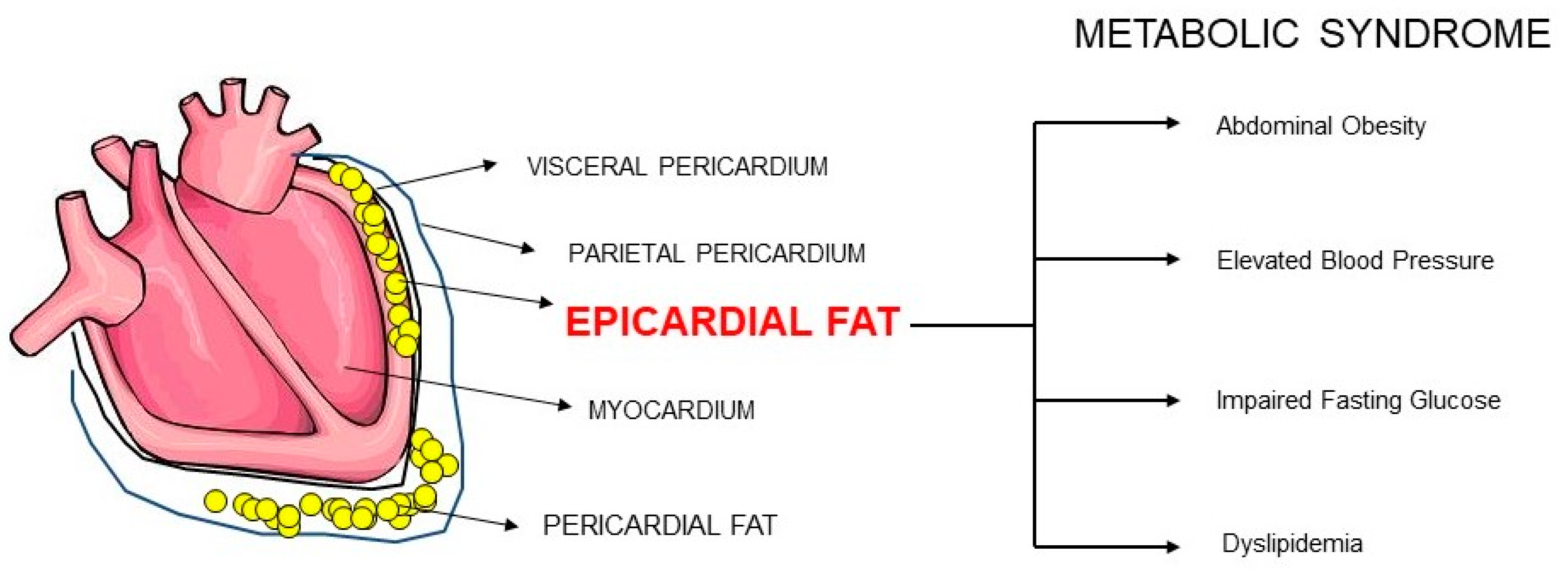Visceral adipose tissue(VAT) is known to be associated with MetS. In 60 healthy subjects without diabetes, hypertension, dyslipidemia or metabolic disease, those with predominant VAT accumulation shower higher EAT thickness than those with predominant peripheral fat distribution [48]. In 72 subjects, some of which had metabolic disorders, those with predominant central VAT accumulation and at least two clinical and metabolic parameters of MetS showed higher EAT thickness on echocardiography than subjects with predominant peripheral fat distribution and no clinical or metabolic alterations [12]. EAT thickness was found to have a positive linear correlation with diastolic blood pressure, fasting insulin, low-density lipoprotein (LDL) cholesterol, glucose, and systolic blood pressure [12]. EAT was found to have a negative linear correlation with plasma adiponectin and HDL cholesterol [12]. Diastolic blood pressure and fasting insulin levels were the variables most strongly correlated with EAT thickness, as per multiple regression analysis [12]. No correlation was found with EAT and plasma triglycerides, c-reactive protein, fibrinogen, heart rate, uric acid, or microalbuminuria in this study [12].
In a 2012 meta-analysis of nine studies on echocardiographic EAT thickness in patients with and without MetS pooling 2027 subjects from nine studies, of whom 1030 had MetS, EAT thickness was significantly higher in those with MetS [50]. This meta-analysis found that patients with MetS tended to be older and that MetS was distributed evenly among men and women. It also found that the difference in EAT thickness was more pronounced in non-Hispanic White subjects followed by Hispanic, Turkish, and Asian subjects [50]. In one included study of 246 subjects, 58% of which had MetS, EAT was significantly thicker in both men and women with MetS compared to those without MetS [51]. These studies suggest that measurement of EAT, and by proxy VAT, represents an effective approach to identify patients at high risk for MetS and its subsequent consequences (Figure 1).

Figure 1. Epicardial fat is associated with metabolic syndrome.
